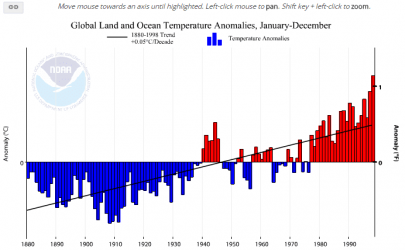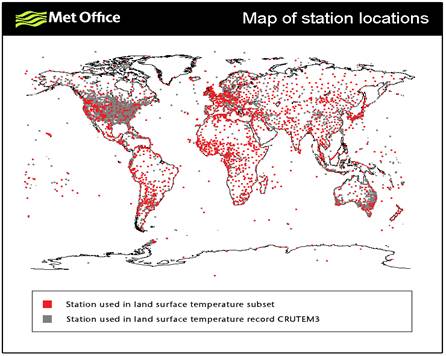Freewill
Platinum Member
- Oct 26, 2011
- 31,158
- 5,072
- 1,130
This is why the US average temperature has shown no warming for the last several years although the global temperatures continue on the same increase. At least the temperature anomaly does.
Don't believe me, go here: Climate at a Glance | National Centers for Environmental Information (NCEI)
Deceptive temperature record claims
TOM HARRIS: Global warming: Deceptive temperature record claims - Washington Times
They also know that calculating so-called global average temperatures to hundredths of a degree is irrational. After all, there is very little data for the 70 percent of Earth’s surface that is ocean. There is also little data for mountainous and desert regions, not to mention the Antarctic. Much of the coverage is so sparse that NASA is forced to make the ridiculous claim that regions are adequately covered if there is a temperature-sensing station within nearly 750 miles. This is the distance between Ottawa, Canada, and Myrtle Beach, S.C. cities with very different climates. Yet, according to NASA, only one temperature sensing station is necessary for the two cities and the vast area between them to be adequately represented in their network.
Don't believe me, go here: Climate at a Glance | National Centers for Environmental Information (NCEI)
Deceptive temperature record claims
TOM HARRIS: Global warming: Deceptive temperature record claims - Washington Times
They also know that calculating so-called global average temperatures to hundredths of a degree is irrational. After all, there is very little data for the 70 percent of Earth’s surface that is ocean. There is also little data for mountainous and desert regions, not to mention the Antarctic. Much of the coverage is so sparse that NASA is forced to make the ridiculous claim that regions are adequately covered if there is a temperature-sensing station within nearly 750 miles. This is the distance between Ottawa, Canada, and Myrtle Beach, S.C. cities with very different climates. Yet, according to NASA, only one temperature sensing station is necessary for the two cities and the vast area between them to be adequately represented in their network.





